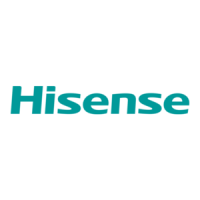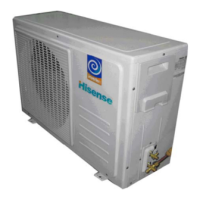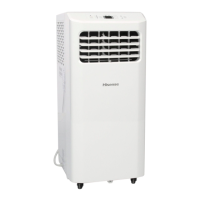How to fix a Hisense Air Conditioner that does not run at all?
- DDarren JordanJul 31, 2025
If your Hisense Air Conditioner isn't running, check these potential causes: 1. Ensure there isn't a power failure and restore power if needed. 2. If the leakage breaker tripped, contact a service center. 3. If the line voltage is too low, consult your electrician or dealer. 4. Make sure the operation button is turned on by pressing it. 5. Replace the batteries in the remote control unit if they are depleted.




